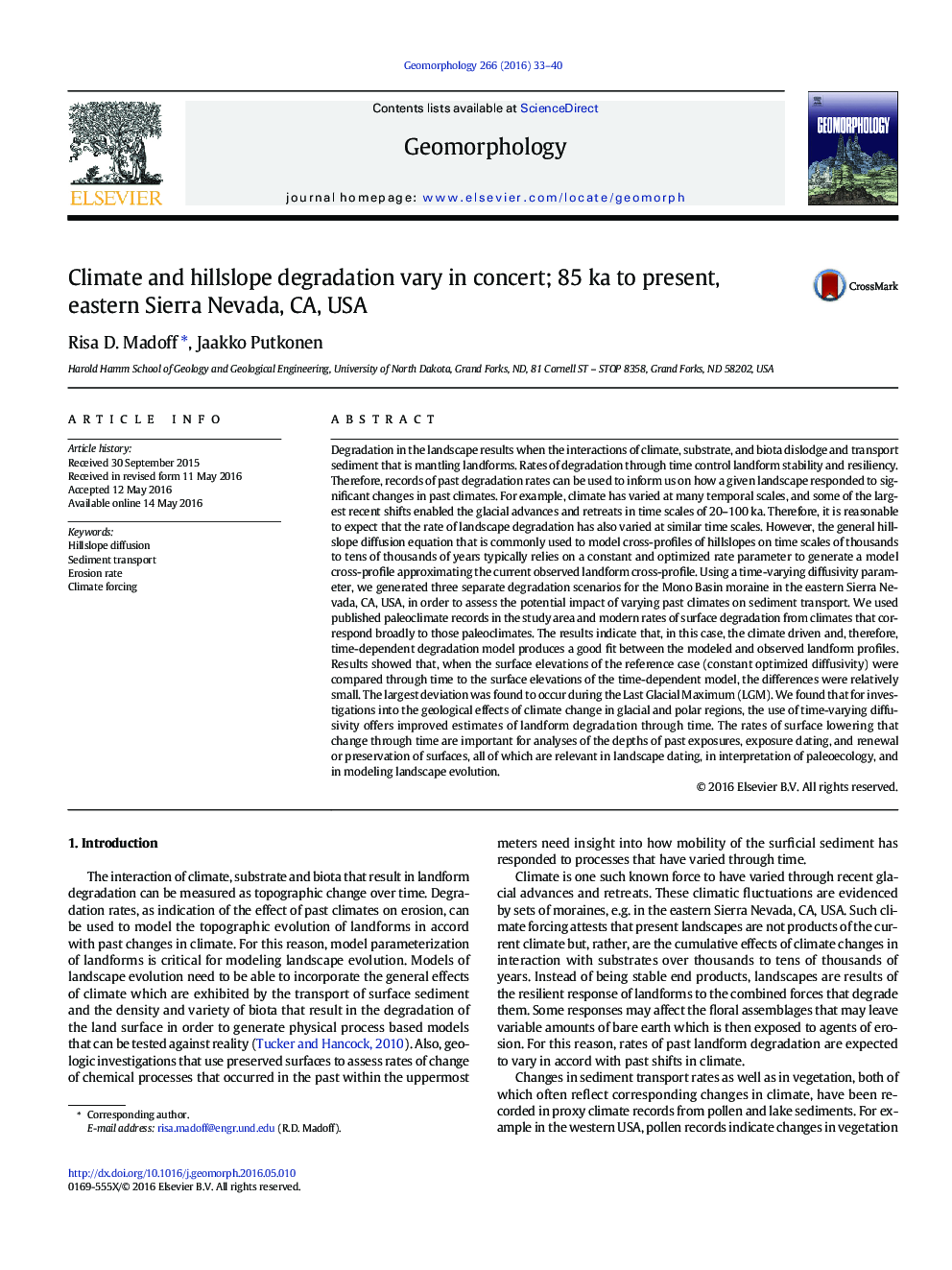| کد مقاله | کد نشریه | سال انتشار | مقاله انگلیسی | نسخه تمام متن |
|---|---|---|---|---|
| 4684014 | 1635383 | 2016 | 8 صفحه PDF | دانلود رایگان |

• Hillslope degradation varies with climate.
• Time-varying topographic diffusivity tied to shifts in climate.
• Regolith erosion and hillslope degradation dictated by glacial/interglacial shift
• Climate dictates regolith erosion rates at a glacial/interglacial time scale.
Degradation in the landscape results when the interactions of climate, substrate, and biota dislodge and transport sediment that is mantling landforms. Rates of degradation through time control landform stability and resiliency. Therefore, records of past degradation rates can be used to inform us on how a given landscape responded to significant changes in past climates. For example, climate has varied at many temporal scales, and some of the largest recent shifts enabled the glacial advances and retreats in time scales of 20–100 ka. Therefore, it is reasonable to expect that the rate of landscape degradation has also varied at similar time scales. However, the general hillslope diffusion equation that is commonly used to model cross-profiles of hillslopes on time scales of thousands to tens of thousands of years typically relies on a constant and optimized rate parameter to generate a model cross-profile approximating the current observed landform cross-profile. Using a time-varying diffusivity parameter, we generated three separate degradation scenarios for the Mono Basin moraine in the eastern Sierra Nevada, CA, USA, in order to assess the potential impact of varying past climates on sediment transport. We used published paleoclimate records in the study area and modern rates of surface degradation from climates that correspond broadly to those paleoclimates. The results indicate that, in this case, the climate driven and, therefore, time-dependent degradation model produces a good fit between the modeled and observed landform profiles. Results showed that, when the surface elevations of the reference case (constant optimized diffusivity) were compared through time to the surface elevations of the time-dependent model, the differences were relatively small. The largest deviation was found to occur during the Last Glacial Maximum (LGM). We found that for investigations into the geological effects of climate change in glacial and polar regions, the use of time-varying diffusivity offers improved estimates of landform degradation through time. The rates of surface lowering that change through time are important for analyses of the depths of past exposures, exposure dating, and renewal or preservation of surfaces, all of which are relevant in landscape dating, in interpretation of paleoecology, and in modeling landscape evolution.
Journal: Geomorphology - Volume 266, 1 August 2016, Pages 33–40